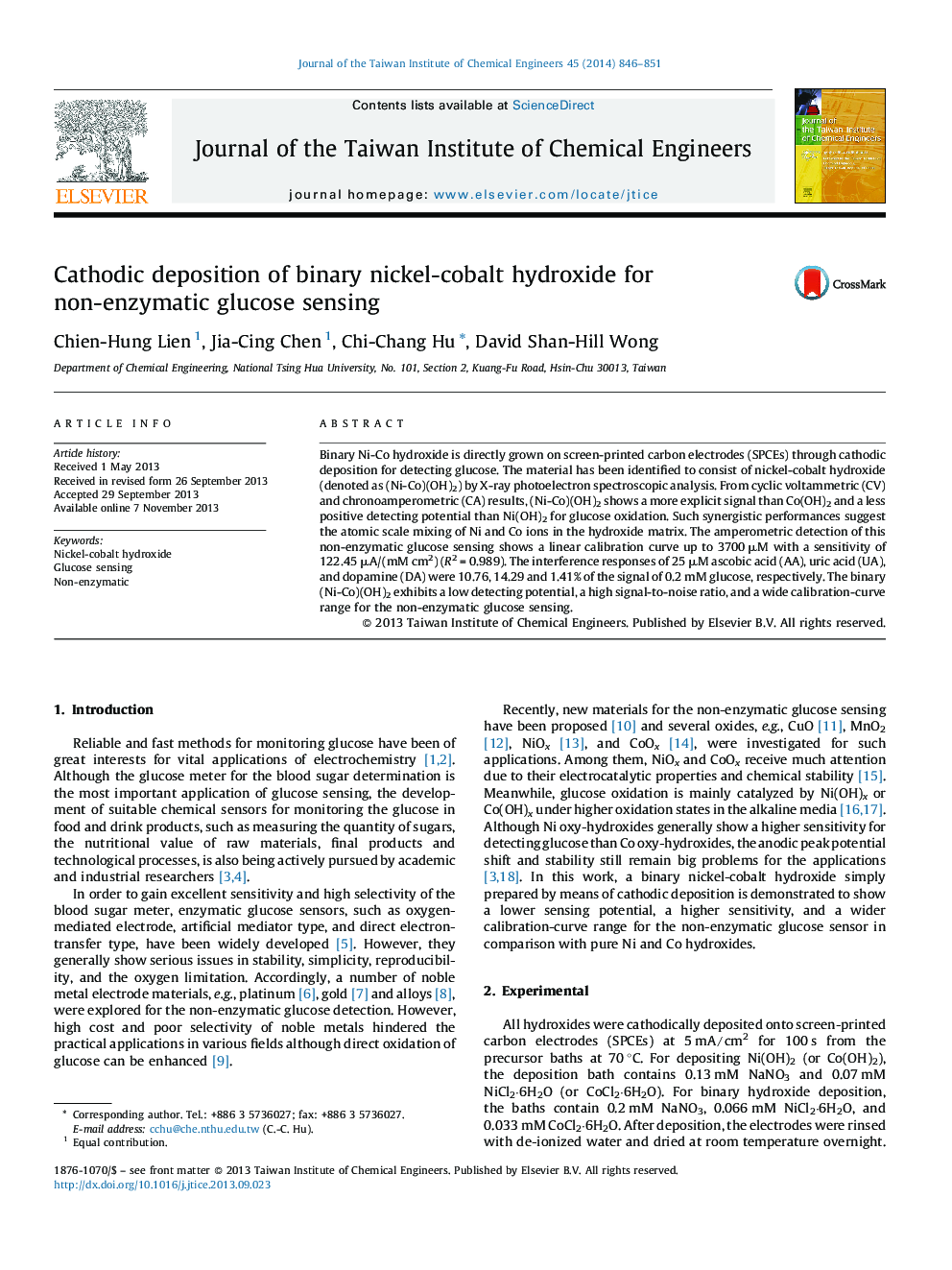| Article ID | Journal | Published Year | Pages | File Type |
|---|---|---|---|---|
| 691249 | Journal of the Taiwan Institute of Chemical Engineers | 2014 | 6 Pages |
•(Ni-Co)(OH)2 shows a high signal-to-noise ratio in nonenzymatic glucose sensing.•The sensitivity, 122.45 μA/(mM cm2), is much higher than most nonenzymatic materials.•(Ni-Co)(OH)2 exhibits lower detecting potential (0.47 V) and wider calibration range to 3.7 mM.•The inferences from AA, UA and DA have been decreased, especially for DA.
Binary Ni-Co hydroxide is directly grown on screen-printed carbon electrodes (SPCEs) through cathodic deposition for detecting glucose. The material has been identified to consist of nickel-cobalt hydroxide (denoted as (Ni-Co)(OH)2) by X-ray photoelectron spectroscopic analysis. From cyclic voltammetric (CV) and chronoamperometric (CA) results, (Ni-Co)(OH)2 shows a more explicit signal than Co(OH)2 and a less positive detecting potential than Ni(OH)2 for glucose oxidation. Such synergistic performances suggest the atomic scale mixing of Ni and Co ions in the hydroxide matrix. The amperometric detection of this non-enzymatic glucose sensing shows a linear calibration curve up to 3700 μM with a sensitivity of 122.45 μA/(mM cm2) (R2 = 0.989). The interference responses of 25 μM ascobic acid (AA), uric acid (UA), and dopamine (DA) were 10.76, 14.29 and 1.41% of the signal of 0.2 mM glucose, respectively. The binary (Ni-Co)(OH)2 exhibits a low detecting potential, a high signal-to-noise ratio, and a wide calibration-curve range for the non-enzymatic glucose sensing.
